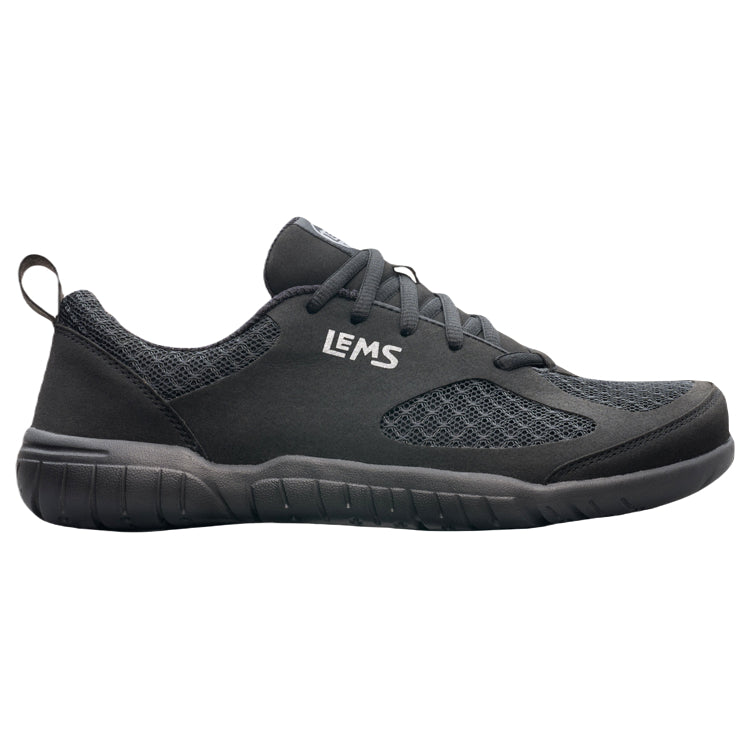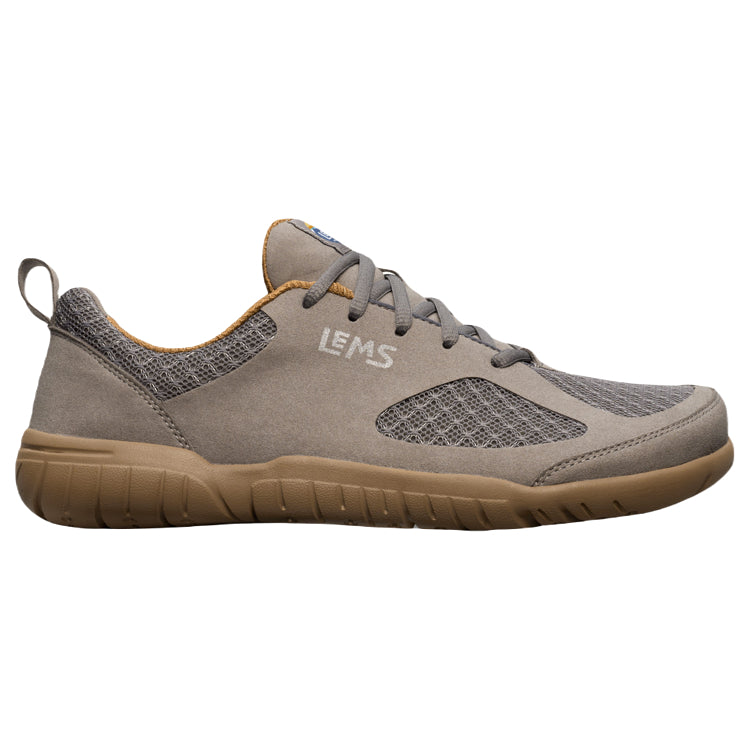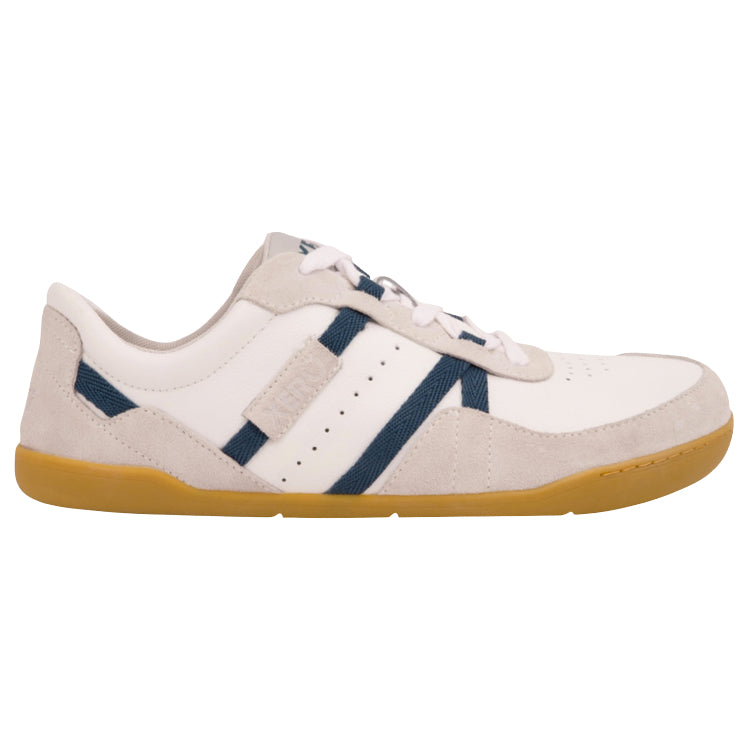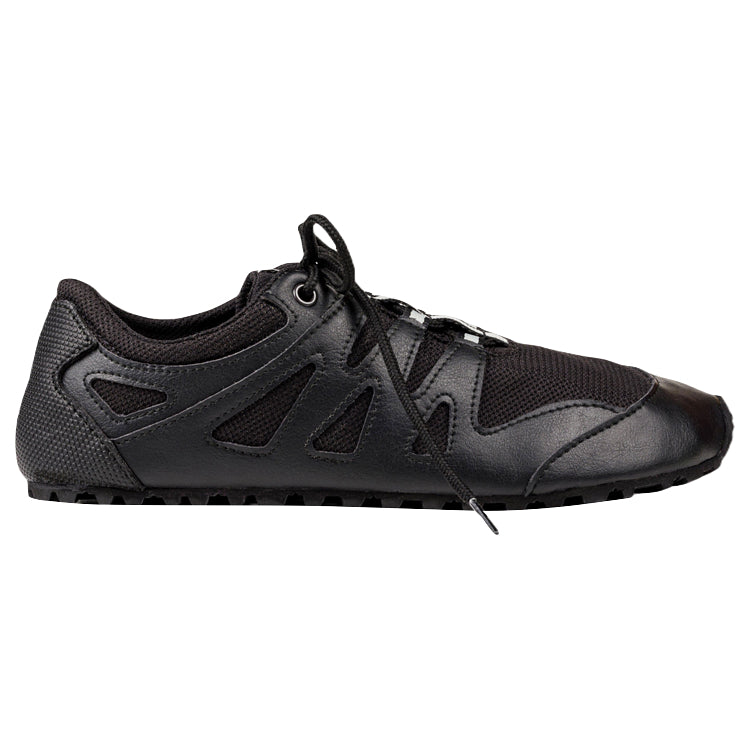
In a world filled with generally atrocious and injurious shoes, there are many possible contenders for “worst type of footwear.” In reality, though, there exists a continuum of footwear, ranging from models that are practically unwearable to models that let you realize your full foot potential. Still, unfortunately, some shoes rise above the rest when it comes to their impact on your foot and musculoskeletal health. Because of the utter ridiculousness of their design and construction and because of the pervasive and damaging societal expectations surrounding them, women’s high-heeled dress shoes would have to top any list of the most egregious and abusive footwear types.
Stilettos and other high-heeled dress shoes not only contort the foot and force it to navigate an absurd Kitzbühel-esque slope, but they also cause significant foot pain and other problems that could otherwise be easily prevented. Indeed, women’s high-heeled shoes take the “prize” for the most offensive and damaging footwear out there, but there are plenty of other types of footwear that are nipping at their (grotesquely elevated) heels. What immediately comes to mind are other kinds of (dressier) women’s footwear, such as clogs (which are commonly, and erroneously, marketed as “good for your feet”) and other thick-soled, rigid platform shoes. Even most conventional dress shoes for men (fancy or otherwise) manage to bind and mangle the foot in an appalling way.

Interesting Side Note: None of the aforementioned footwear types would ever score more than 2 out of 5 on the NFAR, and most likely quite a bit lower than that.
Now, it’s probably not news to most of you that women’s dress shoes (and even many men’s dress shoes) are bad for the feet, but what are some other examples of toe-battering footwear that we need to consider? Other contenders for the worst type of footwear, in our opinion, include a variety of sport-specific options*—shoes or boots that manufacturers tout (dubiously, in many cases) as essential for optimal athletic performance. These shoes and boots are problematic because of their inherent characteristics, yes, but also because they’re more insidious in their treachery than the aforementioned dress shoes; that is, they often cause foot problems without the wearer even knowing what kind of beastly changes are happening to his or her feet. Dishonorable mention, therefore, goes to the following (in no particular order of heinousness):
-
Rock Climbing Shoes: These shoes are notoriously uncomfortable, and they unceremoniously route the toes into a crimped, wedge-like position that more closely resembles the head of a pickaxe than a human foot. Most climbing shoes are so tight on the foot as to create a near-hermetic seal, and they are well-known for causing a number of foot problems, ranging from the more innocuous, such as corns and bruises, to the more daunting and damaging, such as bunions, crooked toes, and nerve compression issues. Throw in an increased likelihood of contracting a bacterial, fungal, or viral infection (especially when they are purchased as rentals at indoor facilities), as well as some serious odor, and you have a shoe that will derail your foot health quicker than Alex Honnold can free solo the kiddie route at your local climbing gym.
-
Cycling Shoes: The problems with conventional cycling shoes—and how to overcome them—have long been documented on this site. Both Dr. Robyn and I are avid road cyclists and have, in the distant past, had the unfortunate experience of wearing narrow toe box cycling shoes for prolonged periods. Even though the feet are not maximally weight-bearing while cycling, because rides can sometimes last three, four, or five hours (and sometimes even longer), there is a degree of damage that occurs to the foot with conventional cycling shoes that is often unparalleled. Indeed, conventional cycling shoes should be avoided at all costs, which is much easier to do if you adopt an appropriately long platform pedal, as we have, and pair it with some foot-healthy athletic shoes.
-
Soccer Cleats: Soccer cleats are, by themselves, typical of a lot of other sport-specific footwear; that is, tapering in the toe box, rigid in the sole, and studded beneath the foot for greater traction on the playing field. The combination of a tapering toe box and rigid sole is bad enough, but throw in the destabilizing effect of the cleats themselves (which significantly elevate the entire foot above the ground) and you have a recipe for repeated ankle sprains. Another thing that puts soccer cleats in the upper echelons of footwear offenders is the fact that most wearers are kids and teens, whose feet and bodies are still growing and developing. Soccer cleats, therefore, set many of our kids up for a lifetime of ongoing foot problems. Note: Dr. Robyn spent quite a bit of time wearing this type of cleat during her university rugby days—and even more time enviously watching matches from the sidelines because of repeated footwear-induced ankle injuries.
-
Dance Shoes: Through our work at Natural Footgear, we often see examples of feet that have suffered mercilessly from a lifetime of confinement in cramped shoes and exhibit a wide variety of preventable deformities. So, we’re no strangers to the maiming effects of conventional footwear. But the degree of damage that results from the combination of strenuous weight-bearing activity and dance-related footwear is often extreme. Whether it’s tap shoes, flamenco shoes, ballroom shoes, or any other such deplorable footwear, dance shoes could not be more incompatible with optimal foot health. Note: Dance shoes vary quite a bit in terms of their design and their impact on the feet. Some, like jazz shoes, are soft and flat, and, though certainly far from perfect, probably wouldn’t qualify for the worst-of-the-worst list. But then there are ballroom dancing shoes, for example, which have high heels, are quite stiff in the sole, and possess rather pointy toe boxes (in both women’s and men’s models), so they present a big problem for the feet. And then ballet shoes are among the worst in this category, especially when used for pointe.
-
Hiking Boots: Have you ever gotten to the end of a long day of hiking and feverishly attempted to pry off your hiking boots in order to relieve the grimace-inducing agony they have caused? Well, we have, many moons ago, before we saw the light and started using sensible footwear that’s actually shaped like a human foot and that allows you to walk with stealth over all sorts of terrain. I’m willing to bet that our experience with hiking footwear is not unique. Rigid, clunky, and far too narrow in the toe box, conventional hiking boots do a major disservice to hikers’ feet and are, by and large, unnecessary. We have, elsewhere on this site, written about the vital importance of and benefits associated with wide toe box footwear for hiking, and we have also dedicated a whole article to the topic of what makes for a truly great hiking boot. Simply put, friends don’t let friends wear conventional hiking boots.
-
Ski Boots: Both Dr. Robyn and I have some experience with skiing and ski boots from our younger years—she with downhill ski boots on the vertiginous slopes of Colorado’s Winter Park and Copper Mountain resorts; I with cross-country ski boots on the icy forest tracks and trails of Southeastern Ontario. Though we participated in different disciplines of the sport, the one thing we had in common was the abominable state of the footwear we used to slide and glide our way around our various parcours. Though both types of ski boot are far from optimal, between the two, I’d have to say that it’s really downhill ski boots—with their incredibly rigid, cast-like uppers—that cause the most damage to the foot and toes (and that have been putting the “hurt” back in “hurtling” for many decades). I can’t let cross-country ski boots off the hook either, though. Even with a more supple upper, these odious boots can still dish out some serious discomfort and lead to long-term toe misalignment and various other foot problems.
-
Skates: The conventional wisdom, at least back in the day, among my hockey-playing classmates in grade school was that you should buy your skates at least two sizes smaller than your normal shoe size and go sockless to achieve a more perfect union between foot, skate, and ice. This was thought to provide a heightened responsiveness to the skater and tighter turning capabilities, among various other purported benefits. I’m not sure how or why this aspect of hockey dogma was passed down through the years, but I do know that jamming your foot into a rigid, two-sizes-too-small skate and then performing high-intensity lateral movements over and over again—not to mention all that carving and rapid stopping—is not a sound strategy for preserving or attaining long-term foot health. I should add that figure skates and speed skates are equally, if not more, constricting than hockey skates.
We’d be remiss if we didn’t mention one last type of footwear that is known to be particularly tough on the feet. And that is, cowboy (or cowgirl!) boots. We know that an affinity for this most famous and identifiable style of boot runs deep in many parts of our land, but any boot that can do this to your feet absolutely must be included on a list of the worst types of footwear for foot health. So, if you’re a fan of the cowboy boot but are feeling the pain, we encourage you to find the closest crowbar you can, jimmy those Justins off your feet, and then two-step your way into a pair of footwear that finally lets your feet breathe. And then gently place these cultural icons on a high shelf, just slightly out of reach, where you can admire them from afar.
The truth is, there are many other examples of deleterious footwear that is used on a daily basis by unsuspecting adopters (basketball shoes, running shoes, and other athletic shoes come to mind). The above is simply a non-exhaustive list of some of the most scandalous and shameless miscreants of the bunch. Some may say that the unique demands of social circumstances or the sports mentioned above require the foot to bend to the will of the shoe, and to some small extent (i.e., in certain rare and unique cases), that may be true. But for the most part, the injurious design elements baked into this footwear could be removed or modified without losing much in the way of functionality (and potentially gaining a lot in terms of foot health).
Until that happens, though, and in the event that you cannot avoid using offending footwear of the kind mentioned above, the best policy is to wear these crippling shoes, boots, and other foot coverings for the briefest amount of time possible, get into Correct Toes and truly foot-shaped and foot-healthy men’s and women’s footwear as soon as you can thereafter, and do all the other things in your daily life that help support the development of strong and stable feet and toes.
*This is not to say that the sports themselves are a problem. To the contrary, we think all of these activities, in and of themselves, are great. It’s just the customary footwear used for each one of them that we take issue with from a foot health perspective. This footwear, to the fullest extent possible, needs to be updated or redesigned so that participants can enjoy their sport or activity without suffering a significant cost to foot health.

WANT TO IMPROVE YOUR FOOT HEALTH?
Let the team at Natural Footgear help you! Subscribe to our newsletter for the latest offers and helpful info, and sign up for our FREE email courses on various topics and foot health conditions.
Sign Up →
Want to Improve Your Foot Health?
We are here to help you every step of the way. Get our newsletter for the latest offers and helpful info, and sign up for our FREE email courses on various topics and conditions, including bunions, hammertoes, neuromas, plantar fasciosis, shin splints, ingrown toenails, and more.
Sign Up →
 One question that we receive from readers from time to time is the following: “Are maximalist shoes good for the feet?” Though opinions may vary on what constitutes maximalist footwear, we at Natural Footgear would categorize any athletic or casual shoe with significant padding or material under the foot’s sole as maximalist. Our feet and footwear philosophy is quite clear, and one of the principles that we believe in most...
Read more
One question that we receive from readers from time to time is the following: “Are maximalist shoes good for the feet?” Though opinions may vary on what constitutes maximalist footwear, we at Natural Footgear would categorize any athletic or casual shoe with significant padding or material under the foot’s sole as maximalist. Our feet and footwear philosophy is quite clear, and one of the principles that we believe in most...
Read more













Great article. I have given up on the idea of ever being able to skate or cross-country ski again, because of the footwear. After 5 years of wearing foot-healthy shoes, my feet have reached their true width in the forefoot and toes, and they literally will not fit into skates or ski boots. I long for the day when athletic footwear makers heed your message.
Thank you for your kind words, Karen! Much obliged. I encourage you to reach out to the individual skate and ski boot brands/companies to voice your opinion. The manufacturers need to hear from their customer base (or the customers they are losing) in order for them to understand how important it is to make the changes that all of us know are necessary.
All the best,
Marty Hughes, DC
I converted to foot-healthy, minimalist footwear about 4 years ago, but I also happen to love climbing. Climbing shoes are kind of a necessary evil—they make it easy to stand on tiny footholds, and they provide traction for “smearing” on smooth rock faces, but they’re the antithesis of what one might consider to be “foot-healthy.” What I did find was that after 4 years, my feet have gotten healthy and strong enough that I can spend an afternoon in climbing shoes without discomfort, which never would have been possible before. So, I give credit to my foot-healthy lifestyle for allowing me to keep climbing for the long haul. Just thought I’d share this to let other would-be foot-healthy climbers out there know that there is hope. :)
Thank you for your comment, Paul! It’s wonderful to hear that you’ve built up the kind of foot strength and resiliency that can easily counter multi-hour bouts in climbing shoes. That’s pretty much a best-case scenario for rock climbers, I think, as there appears to be very little about the footwear itself that is changeable (not true of most other sport-specific footwear, but probably true for rock climbing shoes). What you’re describing is something that we often tell folks (especially women) who are absolutely required to wear heels or conventional dress footwear for formal events. Do the deed if you absolutely must, but practice the best possible foot care techniques at all other times.
All the best,
Marty Hughes, DC
What is a good shoe for walking and aerobics?
Thank you for your question, Loretta! It’s one that we receive here at Natural Footgear from time to time from active individuals seeking to optimize foot health while performing their favorite physical activities. The good news is that the things to look for in a good walking shoe are also the things to look for in a good aerobics shoe. Namely, you’ll want to find and adopt a shoe that incorporates a zero-drop platform (i.e., is completely flat from heel to toe—no heel elevation and no toe spring), and you’ll want to find a shoe that has both a sufficiently wide toe box to accommodate natural toe splay and a flexible sole that lets your foot operate independently and become strong on its own. An overall lightweight shoe that has a low stack height is also key.
In our experience, we’ve found that a number of shoes imbue these important qualities and work well for both walking and aerobics classes. But if we had to whittle the field down to just one such shoe, it would have to be the Xero Prio Neo—a minimalist athleisure shoe that lets you feel the ground and experience the true joy of natural foot and body movement (www.naturalfootgear.com/pages/xero-prio-shoes). This is a shoe that you can easily and seamlessly (and without a second thought) use to walk to your aerobics class, participate vigorously in your high-intensity aerobics session, and then stroll to a nearby coffee shop to meet up with friends for a high-octane beverage. Indeed, the Prio Neo covers a lot of bases, and we think this may be the perfect shoe to meet your needs.
For more info about how to select the best shoe for you, we encourage you to check out our article entitled How to Shop for Shoes (www.naturalfootgear.com/blogs/educational-articles/how-to-shop-for-shoes). And if you have any follow-up questions, please don’t hesitate to reach out!
Yours in Foot Health,
Drs. Marty & Robyn Hughes
Until, for example, someone invents another type of ski boot, it will be: Go with a conventional boot or don’t ski. The high-level skiers (i.e., World Cup, for example) wear bone-crushingly tight boots. There is no room for less than a tight fit. Control on the slope starts with the boot/foot interface. The high-level skiers also use stiff boots that allow them to really push on the boot. The bindings can be adjusted. In high-performance skiing, you don’t want a binding to release when you go over bone-jarring bumps at high speed. The bindings don’t know if the skier has fallen or is going over rough terrain, so it is an experienced fitter who can set tension properly to match the boots and skier’s ability and planned use.
There is more than style when it comes to cowboy boots. The points allow the rider to get the foot into the stirrups quickly, and the heels help reduce the likelihood that the foot will slip through the stirrup. That would be bad, as in the case of a rider being thrown with one foot having gone through the stirrup, leaving him hanging upside down, head and back banging the ground as the horse runs off with the rider “attached.” It happens. It’s not a pretty sight. I could speak of rock climbing shoes, as my son is an advanced climber. Suffice it to say that the climber seeks out the smallest nooks for toes and fingers. Floppy or wider shoes wouldn’t likely provide a better advantage. That’s my two cents.
Hi, Ken,
Thank you for sharing your insights! Much appreciated.
All the best,
Marty Hughes, DC
I would like to see a casual dress shoe for women.
Greetings, Denise. One option that we frequently recommend is the Ahinsa Ananda Barefoot Ballet Flat:
www.naturalfootgear.com/collections/womens-ahinsa-ananda-barefoot-ballet-flat-shoes
This is a classy model with a super wide toe box that can be easily dressed up or down. Just a thought!
Kind regards,
Marty Hughes, DC
Great article. I’ve only skied cross-country about six times this year, but each time, as soon as I was done, I happily transferred my feet back into my Natural Footgear-recommended wide-toe box minimalist shoes. When I retired in 2011, I promised myself I’d never wear high heels again. I’ve kept that promise, and my feet have thanked me for it.
Hi, Pat,
Thank you for your comment. And thank you for your kind words. It’s always great to meet a fellow cross-country skier! I think your approach is a good one: Wearing foot-healthy footwear as often as possible when not in your ski boots. Here’s wishing you much continued success going forward!
All the best,
Marty Hughes, DC
I’m a Nordic ski racer who’s experienced foot pain and problems in the past that have impacted my ability to compete. I like the concepts you talk about on your site, and I’m curious about a couple of things. What role does arch function play in cross-country skiing performance, and should I be concerned about using supportive insoles in my ski boots?
Hello, Jackson. Thank you for your questions. Arch function plays a critical role in cross-country skiing performance, and understanding how to optimize it can have a profound impact on both your efficiency and long-term foot health. The arch is not just a static structure—it’s a dynamic, spring-like system designed to absorb impact, store energy, and facilitate powerful movement. In Nordic skiing, where propulsion and glide efficiency are paramount, a well-functioning arch helps you generate and transfer force effectively, providing stability and responsiveness with each stride. However, many conventional ski boots, with their rigid construction and constrictive design, can limit the natural movement of the foot, potentially weakening the arch over time and leading to compensatory movement patterns that increase injury risk.
When it comes to “supportive” insoles, it’s important to consider their effect on your foot’s natural ability to adapt and function. While insoles can sometimes provide temporary relief from pain or discomfort, they often do so by artificially propping up your arch rather than allowing it to strengthen and function independently. Over time, reliance on external support can contribute to weaker intrinsic foot muscles, reduced arch resilience, and a diminished ability to handle the stresses of ski racing. Instead of masking the problem with artificial support, a better long-term approach is to work on restoring natural foot strength and mobility so your arch can do what it was designed to do—support you dynamically through each phase of your skiing movement, whether it be freestyle or classic.
One way to encourage optimal arch function is by focusing on foot-strengthening exercises that activate the small stabilizing muscles within your foot. Toe splaying and single-leg balance drills can all help improve the strength and coordination of your arch, and you can use tools such as BlackBoard ToeBands for the former and the BlackBoard Basic or Naboso Kinesis Board for the latter to increase the degree of difficulty or challenge. Additionally, spending time in healthy-foot-shaped minimalist footwear when off the skis allows your feet to move, flex, and adapt more naturally, counteracting the restrictive effects of ski boots. Using toe spacers between races or during dryland training sessions is also essential for realigning the toes and promoting a healthier foot structure, which ultimately supports a more functional arch.
That said, transitioning away from supportive insoles should be done gradually and with attention to your body’s feedback. If you’ve been using them for a while, your feet may need time to rebuild strength and resilience. You might consider incorporating a more minimal insole or one that simply provides a thin, non-restrictive layer while allowing your foot to maintain its natural shape and function. Additionally, focusing on overall foot and lower-leg mobility can help ensure that your arch is buttressed by strong, adaptable tissues rather than rigid, artificial structures. In the end, your best skiing performance will come from feet that are strong, responsive, and able to move naturally. Prioritizing arch function as part of your training and recovery routine can help you generate more power, improve endurance, and reduce injury risk.
By making small but intentional adjustments to how you care for and train your feet, you can cultivate a more sustainable and high-performing foundation for your skiing career and cruise the trails at your competitive best. I hope this info helps! Please let me know if you have any follow-up thoughts or questions.
All the best,
Marty Hughes, DC